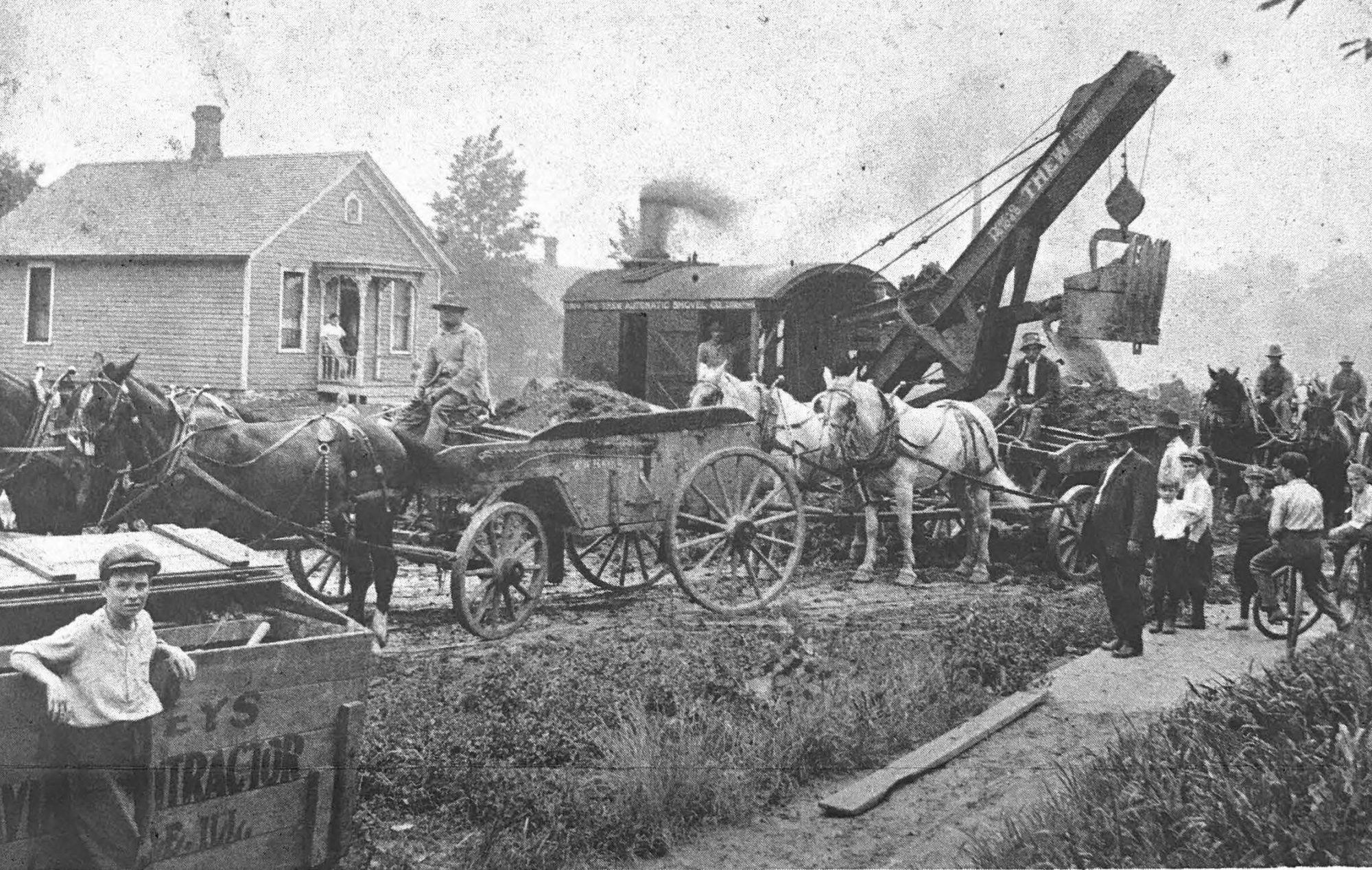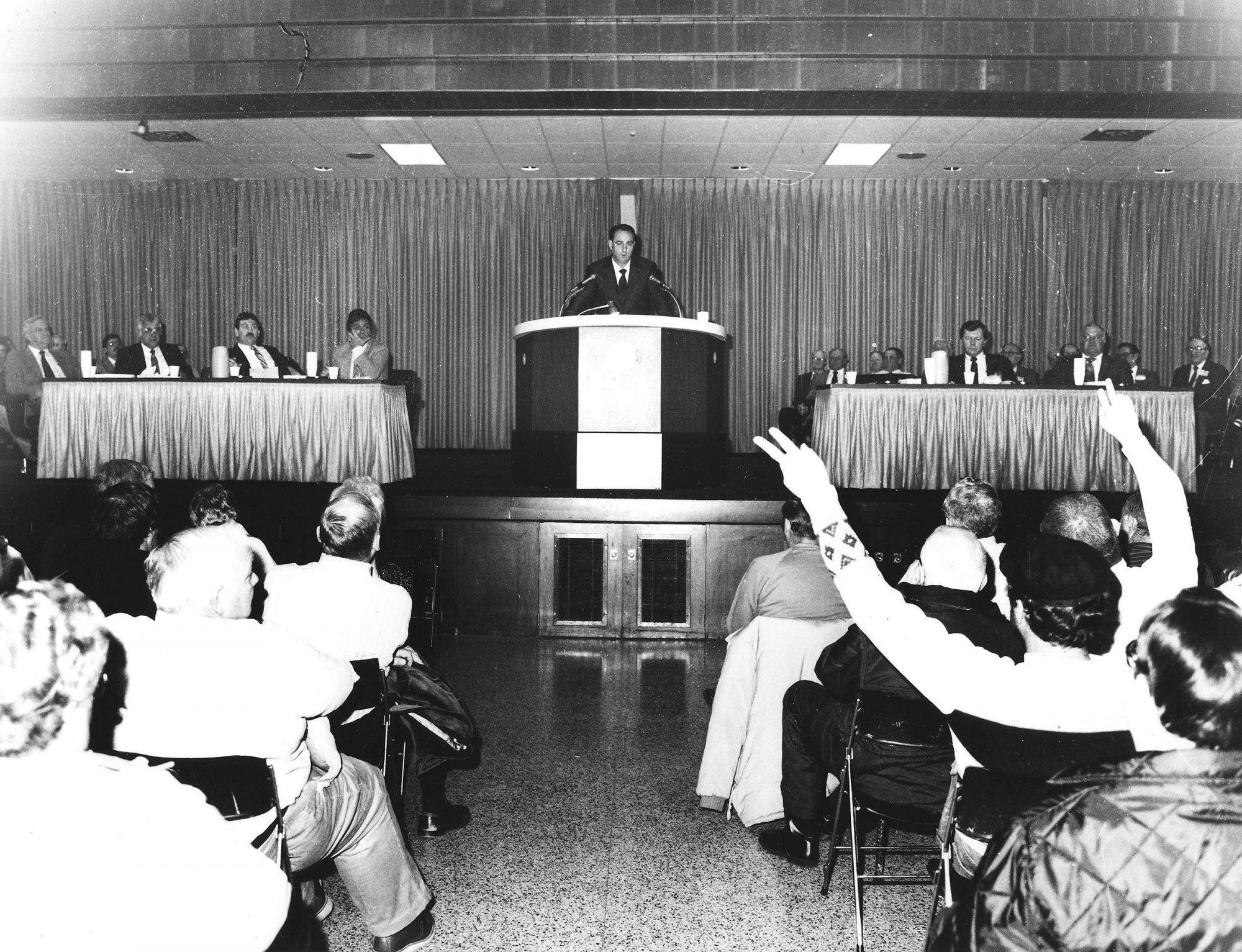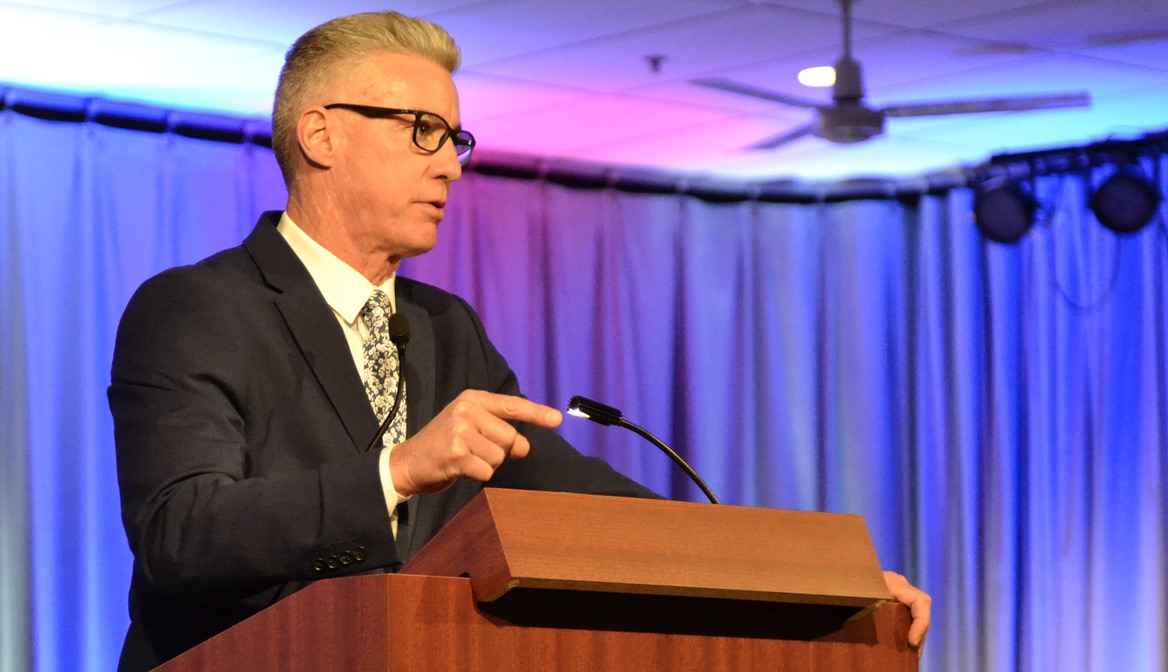On December 7, 1896, representatives from 11 local unions met in Chicago, Illinois, to establish the National Union of Steam Engineers. By that time, steam had been effectively harnessed to power the shovel used in railroad and other heavy construction. Steam also powered various types of hoists to lift the materials that went into the earliest high-rise buildings, and powered the plants which created electricity for the most modern buildings of the era. In 1897, the American Federation of Labor (AFL) granted the renamed International Union of Steam Engineers (IUSE) the union’s first International charter.
As more and more steam engineers formed local unions across the country, the International Union issued charters to two basic groups: hoisting and portable locals which brought together steam engineers who worked largely in the construction industry; and stationary locals representing the engineers who maintained fixed boilers that served as power plants in buildings. In 1912, the IUSE became the International Union of Steam and Operating Engineers. As the technology expanded beyond steam to include gasoline- and diesel-powered machines, the union renamed itself the International Union of Operating Engineers in 1928.
By that time, operating engineers in the Chicago area were represented by at least three major local unions chartered by the International. They included Local 569, a hoisting and portable local which had jurisdiction over building construction work limited to the City of Chicago; Local 42, a steam shovel and dredgeman’s local which had regional jurisdiction outside the Chicago city limits; and Local 464, a steamroller engineer’s local which had jurisdiction in the City of Chicago for street work done “from curb to curb.”

By the late 1920s, the International Union sought to limit jurisdictional disputes between locals and increase their bargaining strength by forcing them to merge. In 1929, as part of this broader “amalgamation” movement across the country, the International lifted the charters of Locals 569 and 42 and granted their jurisdiction to Local 150. The International appointed the previous President of Local 569, William F. Maloney, as President-Business Manager of Local 150, while the previous President of Local 42, John Tracy, was appointed Business Agent. A year later, Local 464 voted to consolidate its jurisdiction with that of Local 150.
William F. Maloney served as President-Business Manager of Local 150 from 1929 until he moved to Washington as an International officer in 1940. The International then appointed John Lynch to serve as Local 150 President-Business Manager, a position he held until 1952. In 1953, the International appointed William Law to serve as President-Business Manager. James P. Crane was appointed President-Business Manager in 1954, and in 1958, Crane won Local 150’s first contested election, holding the office until 1962.
In 1959, the federal law regulating unions known as Landrum-Griffin was passed in and local unions across the country were required to conduct elections for their officers every three years. In 1962, the members voted William F. Martin into office as President-Business Manager. Martin served in that position until he retired in 1984. Thomas Rodd succeeded Martin as President-Business Manager and served for two years.
In 1986, the Membership of Local 150 elected William E. “Bill” Dugan President-Business Manager. In the 20 years Dugan has served as President-Business Manager, Local 150 has doubled its membership. By careful training of apprentices and aggressive organizing of non-union workers, Local 150 has increased its bargaining strength. That strength has enabled the union to negotiate some of the best contracts in the construction industry. Over that period of time, wages in the union’s biggest contracts have doubled; the assets of the Pension Fund have increased from $400 million to over $2.7 billion; and benefits and working conditions have remained the best in the industry.

When the economic collapse of late 2008 began to impact Local 150, the union, under the leadership of President-Business Manager James M. Sweeney, implemented programs and action plans to create work, protect benefits, and keep members afloat. Mobilizing members to lobby for job programs like Indiana’s “Major Moves” and Illinois’ $31 billion capital program resulted in jobs for members during a period where the private sector was producing little to no employment opportunities. Actions were taken to shore up and protect the benefit funds, bringing them out of the worst depression in generations healthy and sustainable. The Local 150 Food Bank and subsidized healthcare self-pays kept out-of-work members and families fed and insured through the worst of the economy.
Recovery from the worst of the economic downturn was brought about by large public infrastructure investments, many of which were the result of members’ advocacy. By 2014, private investment had begun to increase and Local 150 found itself with its lowest unemployment numbers in more than seven years as it fought to restore the union density the industry enjoyed prior to the recession. And in 2016, the union succeeded with a landslide victory of nearly 80 percent of voters approving an amendment to the Illinois’ Constitution ensuring that transportation revenue can no longer be spent for purposes other than transportation. Passing this amendment meant securing permanent investment in infrastructure and keeping our members working through future recessions.
Over the course of the economic recovery, quick action and forward-thinking protected members from disaster, and activism secured public capital projects for years into the future. The union is dedicated to continued legislative, business, and community outreach for Local 150 members.
In 2018-2019, Local 150 was instrumental in supporting Indiana and Illinois’ largest-ever capital plans for infrastructure spending. These plans set forth a long-term, sustainable funding source for decades to come, and serve as an example of the responsible transportation infrastructure investment that we believe the federal government should make. With an abundance of public and private infrastructure work, Officers have focused on negotiating contracts that provide members with meaningful economic increases while stabilizing and enhancing benefit funds.
The COVID-19 pandemic has provided unique challenges to all industries, but by fighting to include operating engineers as “essential workers” and creating policies to keep workers safe on the job, Local 150 avoided the catastrophic loss in work-hours that many unions and businesses saw in 2020. Local 150’s leadership is committed to promoting job-creating legislation, negotiating industry-best collective bargaining agreements, expanding its world-class training program, and providing members the best service possible on the job.


